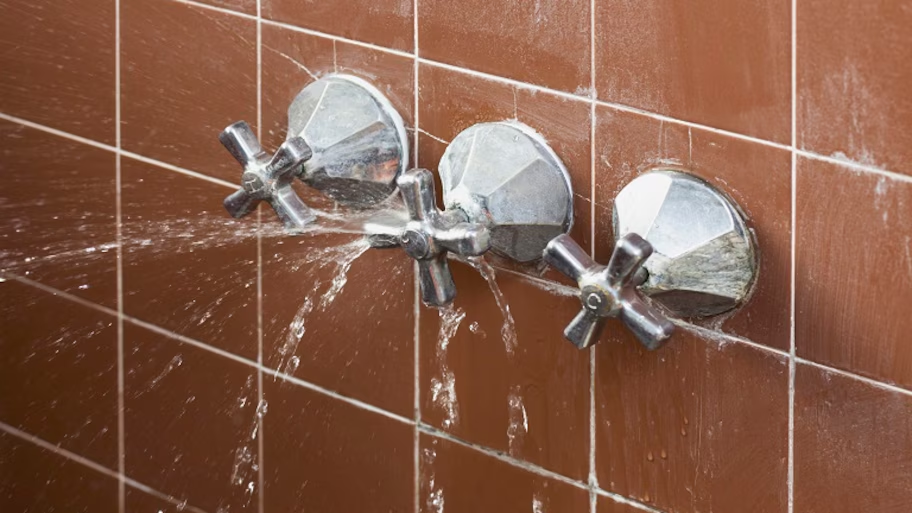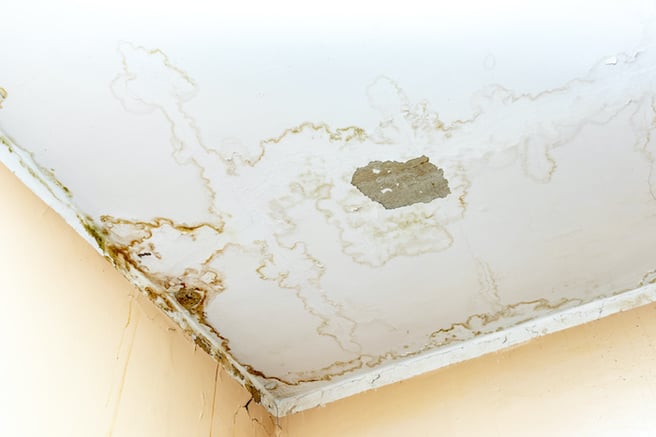This article in the next paragraphs in relation to How to Repair and Prevent Bathroom Water Damage? is quite captivating. Don't skip it.

Water damage typically occurs in the washroom as a result of the water used daily. Sometimes, the damage could be a little mold from the shower. Other times, it's large damages on your flooring. Whatever it is, it is constantly good to know the cause as well as avoid it before it occurs.
This overview will certainly experience several of the typical sources of water damage in the washroom. We will certainly additionally analyze what you can do to stop these reasons from harming your washroom. Allow's dive in.
5 Usual Causes of Water Damage in Bathrooms
These are the usual factors you would certainly have water damage in your washrooms and also just how you can identify them:
Ruptured or Dripping Pipelines
There are lots of pipelines bring water to different parts of your restroom. Some pipes take water to the toilet, the sink, the taps, the shower, and many various other areas. They crisscross the tiny location of the shower room.
Every now and then, these pipelines might get rusty and ruptured. Various other times, human activity might cause them to leak. When this happens, you'll locate water in the edges of your shower room or on the wall surface.
To find this, look out for gurgling wall surfaces, mold and mildews, or mildew. Call a professional emergency plumbing professional to repair this when it happens.
Splits in your wall surface ceramic tilesv
Washroom wall surface ceramic tiles have been specifically designed for that objective. They secure the wall from dampness from individuals taking showers. However, they are not undestroyable.
In some cases, your bathroom wall surface ceramic tiles crack and also enable some dampness to leak into the wall surface. This might possibly ruin the wall if you do not take any activity. If you discover a split on your wall floor tiles, repair it immediately. Don't wait till it ruins your wall surface.
Overflowing commodes as well as sinks
As human beings, often we make mistakes that might cause some water damage in the shower room. For example, leaving your sink faucet on could trigger overflowing as well as damages to other parts of the washroom with wetness.
Additionally, a defective commode could trigger overruning. For example, a damaged commode deal with or various other parts of the cistern. When this occurs, it can damage the flooring.
As soon as you discover an overruning sink or toilet, call a plumbing technician to aid handle it promptly.
Roof Leaks
Often, the trouble of water damage to the restroom may not originate from the bathroom. For instance, a roof covering leak might create damage to the restroom ceiling. You can identify the damages done by taking a look at the water spots on the ceiling.
If you locate water discolorations on your ceiling, check the roofing system to see if it's harmed. After that, call a professional to assist fix the concern.
Excess Moisture
It's awesome to have that lengthy shower and also dash water while you dance around as well as imitate you're executing, yet sometimes these acts could trigger water damage to your shower room.
Spraying water around can cause water to go to corners as well as develop mold and mildews. See how you spread excess moisture around, as well as when you do it, clean it up to avoid damages.
Verdict
Water damage to your washroom can be annoying. However, you can handle it if you avoid a few of the causes pointed out in this overview. Call an expert emergency situation plumbing professional if you see any kind of extreme damages.
How to Repair a Water-Damaged Wall in the Bathroom
All you need to know to repair bathroom wall water damage – from identifying the water source to finishing the repair professionally. If you don’t act quickly to resolve a water damage problem, you could find that it develops into a mold issue and/or cause structural damage to your home. Follow this guide to repair your bathroom before it's too late.
All you need to know to repair bathroom wall water damage
Water damage is a common household problem, and one that, if left unrepaired, can quickly lead to structural problems and health issues. The two most likely rooms where water damage may occur is the bathroom and the kitchen – where water is used often and there is high humidity.
What is water damage?
It is easy to think of water damage as caused by a flood or leaking tap or burst water pipe. However, when water damage is assessed, there are three main categories into which water falls (as classified by the American National Standards Institute). These categories are defined as:
Category 1 Water – ‘Clear Water’
This is sanitary water. There is usually no major threat to health by washing with this water, drinking it, or inhaling if it is streaming. Most water that enters your home will be category 1 water, while most water leaving your home will be either category 2 or 3 water. It may also come from melting snow, rainwater and water tanks.
Damage caused by this type of water can usually be repaired or restored, though this doesn’t mean that there are no potential health issues.
Category 2 Water – ‘Grey Water’
This is contaminated water – sometimes considerably so – and will cause illness if consumed or if it comes into contact with your skin. Water damage in this category is often caused by overflows from toilet bowls, and damage to washing machines and dishwashers. While damaged items might still be repaired or restored after damage by grey water, it is more difficult and more expensive to do so.
If the water damage in your home has been caused by grey water, it is advisable to have repairs made by professionals.
Over time, grey water will deteriorate and become black water.
Category 3 Water – ‘Black Water’
Category 3 water, also known as black water, is highly contaminated and a great risk to health. This may contain raw sewage, heavy metals, and other toxic substances. It will smell terrible.
If this is the water that has caused damage in your bathroom, do not touch it. Stop the water flowing if possible, seal the room and call the experts: it really isn’t worth the risk of ill health and disease that could be fatal. It is very unlikely that items can be repaired or restored if they have been damaged by black water.
https://www.porterscleaning.com/blog/how-to-repair-a-water-damaged-wall-in-the-bathroom/

How to Repair a Water-Damaged Wall in the Bathroom
All you need to know to repair bathroom wall water damage – from identifying the water source to finishing the repair professionally. If you don’t act quickly to resolve a water damage problem, you could find that it develops into a mold issue and/or cause structural damage to your home. Follow this guide to repair your bathroom before it's too late.
All you need to know to repair bathroom wall water damage
Water damage is a common household problem, and one that, if left unrepaired, can quickly lead to structural problems and health issues. The two most likely rooms where water damage may occur is the bathroom and the kitchen – where water is used often and there is high humidity.
What is water damage?
It is easy to think of water damage as caused by a flood or leaking tap or burst water pipe. However, when water damage is assessed, there are three main categories into which water falls (as classified by the American National Standards Institute). These categories are defined as:
Category 1 Water – ‘Clear Water’
This is sanitary water. There is usually no major threat to health by washing with this water, drinking it, or inhaling if it is streaming. Most water that enters your home will be category 1 water, while most water leaving your home will be either category 2 or 3 water. It may also come from melting snow, rainwater and water tanks.
Damage caused by this type of water can usually be repaired or restored, though this doesn’t mean that there are no potential health issues.
Category 2 Water – ‘Grey Water’
This is contaminated water – sometimes considerably so – and will cause illness if consumed or if it comes into contact with your skin. Water damage in this category is often caused by overflows from toilet bowls, and damage to washing machines and dishwashers. While damaged items might still be repaired or restored after damage by grey water, it is more difficult and more expensive to do so.
If the water damage in your home has been caused by grey water, it is advisable to have repairs made by professionals.
Over time, grey water will deteriorate and become black water.
Category 3 Water – ‘Black Water’
Category 3 water, also known as black water, is highly contaminated and a great risk to health. This may contain raw sewage, heavy metals, and other toxic substances. It will smell terrible.
If this is the water that has caused damage in your bathroom, do not touch it. Stop the water flowing if possible, seal the room and call the experts: it really isn’t worth the risk of ill health and disease that could be fatal. It is very unlikely that items can be repaired or restored if they have been damaged by black water.
https://www.porterscleaning.com/blog/how-to-repair-a-water-damaged-wall-in-the-bathroom/
Do you like reading about How to Repair and Prevent Bathroom Water Damage?? Make a remark directly below. We'd be glad to see your views about this piece. In hopes that you visit us again in the future. Be sure to set aside a second to promote this write-up if you enjoyed it. I thank you for reading our article about How to Repair and Prevent Bathroom Water Damage?.
Check Us Out